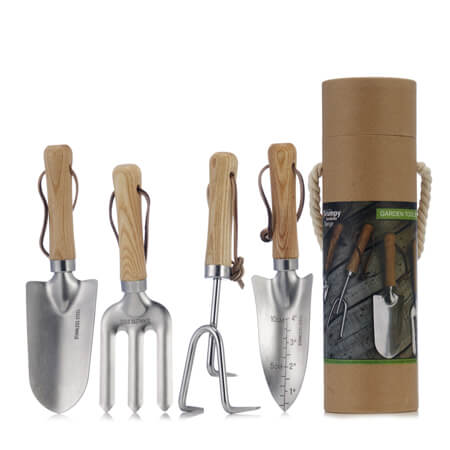The temperatures are dropping and the last of the autumn leaves are falling to the ground creating carpets of yellow, orange and browns. Autumn has its own special beauty as it draws the growing season to an end ahead of a period of semi-dormancy – a time to relax and plan for spring! Before winter arrives, however there are a few essential tasks that need doing as discussed here. Investing in essential garden tools will help get these jobs done to a high degree of efficiency.
Autumn garden tasks
- Tidy the edges to borders of flower beds – trim the grass, dead-head flowering plants (especially roses), remove weeds and cut back dead branches or stems. For those who love a tidy looking garden, the neat edges to flowerbeds and paving will distract from the grass being a little longer than it would be in spring and summer
- Plant bulbs for a vibrant display of colour in spring. Plant daffodils between September and October, tulips in November
- Give your lawn it’s last mow and spread an autumn fertiliser to add nutrients while also stopping the growth of weeds and moss. This is also a good time to lay new lawn while ground warm but not too wet
- Dig compost or well-rotted manure into your flowerbeds to keep plant roots warm over winter
- Plant or transplant evergreens, shrubs, roses or hedging while the soil is still warm and is moist enough for easy digging. September to November is considered ideal for tree planting because roots can become established before the ground freezes over
- Move frost sensitive potted plants and tender perennials indoors or store in a greenhouse, garage or conservatory – it only takes one night of frost to damage more sensitive types of garden plants. If you don’t have a sheltered place to keep vulnerable plants over the winter months, make sure you cover them with garden fleece or bubble wrap to protect from frost and freezing temperatures. Water less to bring on a state of semi dormancy. Digging in an ample amount of compost mulch or leaf mould should protect other hardier plants which stay outdoors over winter
- Clean garden equipment by removing all traces of rust. Store in a dry place to avoid corrosion
- Prune back deciduous hedges
- Rake-up leaves as often as you can. Leaves left on the lawn will block sunlight reaching the blades of grass, which may result in brown patches and moss growth. Make leaf mould from the fallen leaves. This will make a soil improver or nutrient rich mulch in which to grow seedlings. Leaf mould can be made by creating a separate leaf heap. The fibrous leaf mould retains moisture and enhances soil drainage. A leaf heap can be constructed using chicken wire and log posts allowing air to circulate. A leaf heap should take a year to rot down
- Clean and cover or store garden furniture. Leaving it uncovered could encourage a green mould growing on it which then means having to do a tougher cleaning job before using the furniture again when the weather warms
Autumn is also the perfect time of the year to build a garden pond in your garden. Wildlife will love you for this addition to your outdoor space.
Garden tools to help with some gardening tasks
And, with every job having the right garden tools to hand helps get things done more effectively and efficiently. A grumpy gardener who became frustrated with the garden tools in his shed decided to design his own. Today he has his own unique range of garden tools to keep flowerbeds weed free, hedges and roses neatly pruned back, leaves collected for the leaf composter, weeds and moss carpets removed from between paving and the garden kept tidy through the seasons.
- use a wheelbarrow booster to triple the loading capacity of your barrow to reduce the number of journeys you have to make to your composter or brown bin
- a cultivator will help you to break-up and aerate the soil before planting, remove stubborn weeds from flowerbeds and between paving
- a hand fork to cultivate and hoe flowerbeds
- hand trowel or garden spade with depth markers etched into it so you know how far you need to dig when planting bulbs
- ergonomically designed secateurs with knuckle guard to avoid scratches to the hand when pruning – not all gardeners like wearing gloves!
- avoid the pain of kneeling to weed and nurture flowerbeds by investing in a good quality garden kneeling pad that is easy to clean and will last a lifetime
If, like me you love to potter about in your garden, you would probably agree that the easiest way to tackle these jobs is with the correct garden tools and a garden kneeling pad that will take the pressure off your knees while you enjoy the pleasure of transforming green space into a haven for wildlife and a place to relax and flitter away time during the warm days of summer.





